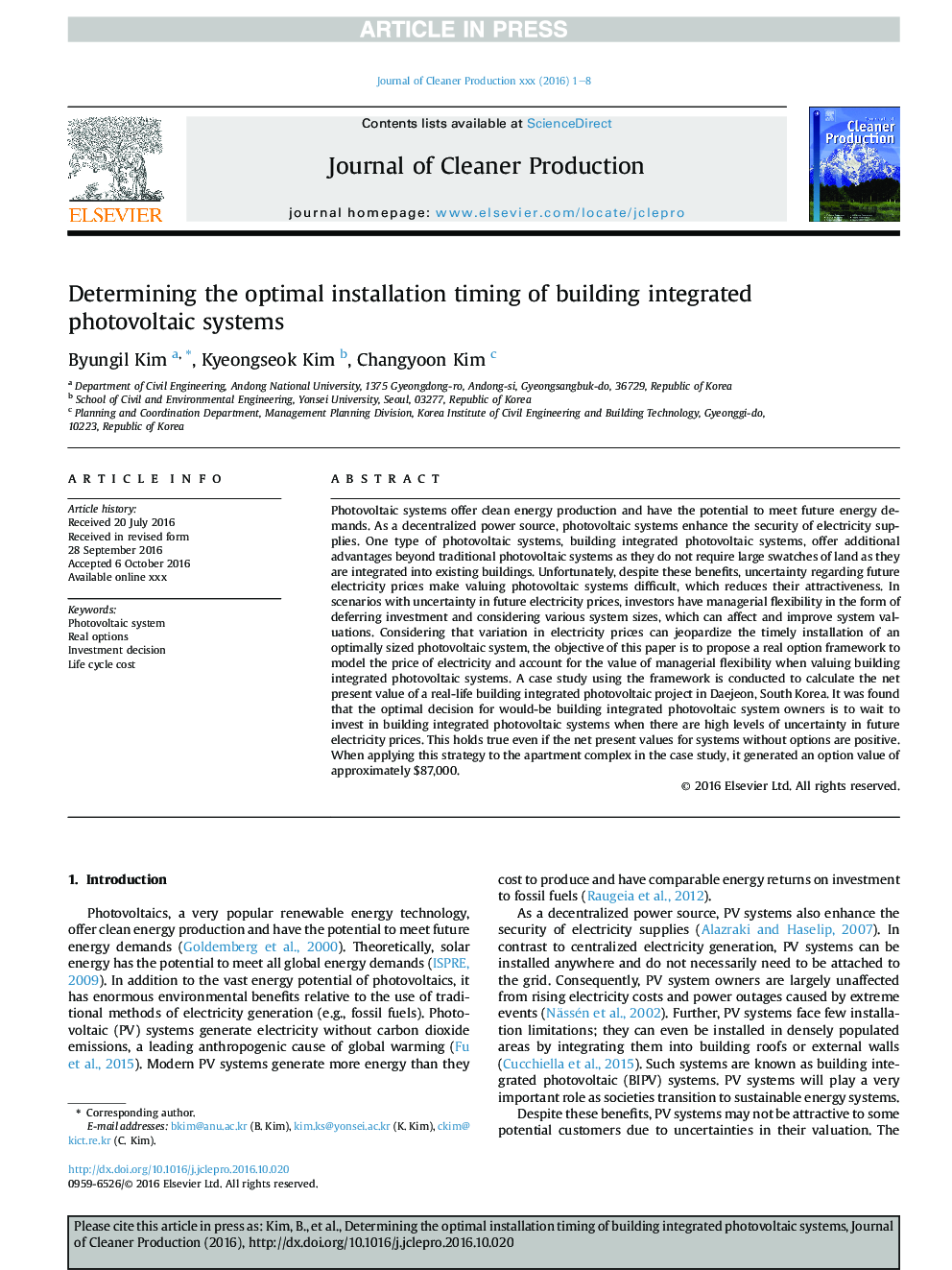| Article ID | Journal | Published Year | Pages | File Type |
|---|---|---|---|---|
| 5481397 | Journal of Cleaner Production | 2017 | 8 Pages |
Abstract
Photovoltaic systems offer clean energy production and have the potential to meet future energy demands. As a decentralized power source, photovoltaic systems enhance the security of electricity supplies. One type of photovoltaic systems, building integrated photovoltaic systems, offer additional advantages beyond traditional photovoltaic systems as they do not require large swatches of land as they are integrated into existing buildings. Unfortunately, despite these benefits, uncertainty regarding future electricity prices make valuing photovoltaic systems difficult, which reduces their attractiveness. In scenarios with uncertainty in future electricity prices, investors have managerial flexibility in the form of deferring investment and considering various system sizes, which can affect and improve system valuations. Considering that variation in electricity prices can jeopardize the timely installation of an optimally sized photovoltaic system, the objective of this paper is to propose a real option framework to model the price of electricity and account for the value of managerial flexibility when valuing building integrated photovoltaic systems. A case study using the framework is conducted to calculate the net present value of a real-life building integrated photovoltaic project in Daejeon, South Korea. It was found that the optimal decision for would-be building integrated photovoltaic system owners is to wait to invest in building integrated photovoltaic systems when there are high levels of uncertainty in future electricity prices. This holds true even if the net present values for systems without options are positive. When applying this strategy to the apartment complex in the case study, it generated an option value of approximately $87,000.
Related Topics
Physical Sciences and Engineering
Energy
Renewable Energy, Sustainability and the Environment
Authors
Byungil Kim, Kyeongseok Kim, Changyoon Kim,
